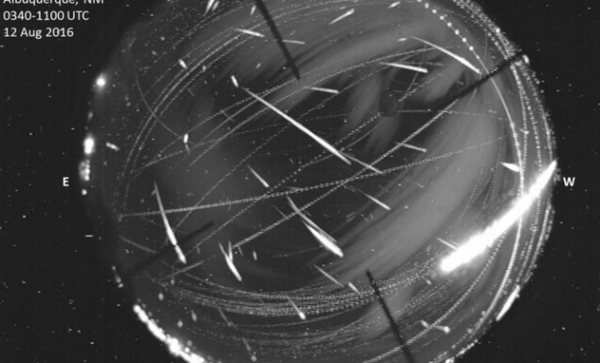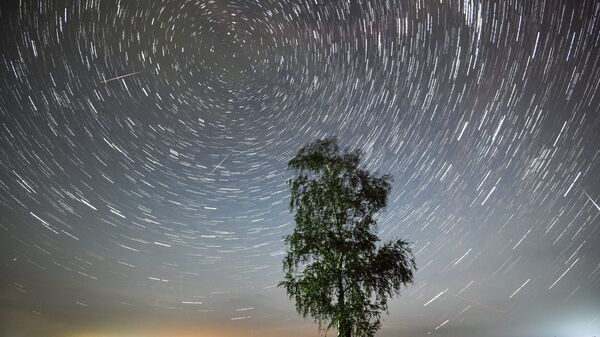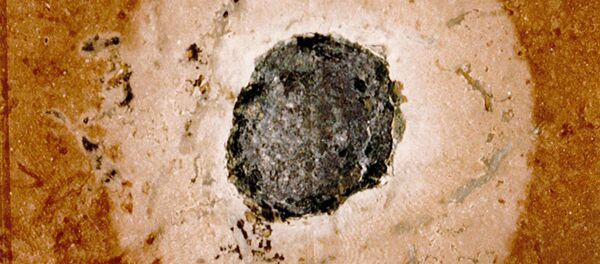The students created the image from pictures of the meteor shower which were captured across the globe by wide-angle cameras monitoring the night sky.
The Perseid meteors shower Earth when it passes through a trail of debris left by Comet Swift-Tuttle. The comet measures about 26 km across, and passes close to Earth every 133 years; the last time was in 1992.
Comet Swift-Tuttle, which was first discovered by US astronomers Lewis Swift and Horace Tuttle in 1862, is predicted to return pass Earth again August 2126, traveling through space at a speed of 58 km/s.

In the 1970s, scientists predicted that the comet could then collide with Earth, an impact which would have about 300 times the energy of the asteroid collision that is thought to have caused the extinction of the dinosaurs.
However, it is now believed that Swift-Tuttle is on course to miss the Earth by about 23 million km in 2126. Astronomers believe that the comet won't ever get closer than about 130,000 km to the Earth's orbit; the Moon is an average of 384,000 km from Earth.


